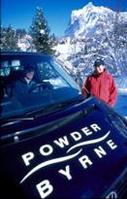IAM fleet ensures winter driving is snow problem
 IAM trains ski resort drivers for extreme winter weather and issues general advice for driving in winter conditions.
IAM trains ski resort drivers for extreme winter weather and issues general advice for driving in winter conditions.As the days shorten and thoughts turn to winter, one of the last things on most company car drivers’ minds is how to cope in freezing conditions – but for drivers from leading prestige ski tour operator, Powder Byrne, it’s of paramount importance.
IAM Fleet is once again gearing up for the ski season by training the travel firm’s resort drivers in specific techniques for driving on snow and ice, to ensure the safety of their guests.
Powder Byrne operates five minibuses for transfers around its luxury destinations in Switzerland. All drivers will attend a two-day IAM Fleet driver-training course on location, in the kind of conditions they will experience through the season.
Powder Byrne’s Simon Ford believes such training is vital: "We have a responsibility to keep both our staff and our guests safe. If you haven’t lived your life in a ski resort, driving on snow is something you need to learn and I feel happier knowing our resort teams are specifically trained for it."
Although business drivers in Britain should not expect to regularly encounter Swiss ski conditions, IAM Fleet’s head of training, Mark Edwards, believes everyone can benefit from a little more understanding.
Said Mark: "In the UK, we have relatively little exposure to snow and ice and perhaps less call for some of the advanced techniques required to drive in such conditions. However, you don’t need several feet of snow for road dangers to increase and there are some basic tips and skills that could make us all safer and ready to deal with winter driving problems."
IAM has some specific points of advice on preparing for and driving in winter conditions:
In really bad conditions, start by asking yourself if your journey is really necessary and/or can it be delayed until conditions improve?
Clean your windscreen and windows (low sun on cold winter days can be dazzling and prevent you from seeing changes in road conditions and other hazards), check screen washers are not blocked and that screen wash is topped up and contains solution to prevent freezing.
Avoid using very hot water to clear frozen window glass, as it could break the glass and will re-freeze more quickly.
Ensure that head, tail and brake lights are all working and keep lenses clear and free from snow or salt.
Ensure tyres are in good condition and properly inflated.
Carry the following in your vehicle: warm coat, reflective jacket, torch, tow rope, mobile phone, ice scraper.
Look out for ‘frost hollows’ and icy patches, particularly in shadowed areas on country roads.
Remember that in cold weather, bridges tend to freeze over first (as they have cold air above and below them).
As a general rule, select the highest gear you can to move off in to avoid wheel spin and keep the engine revs low.
Keep your speed down in adverse weather; increase safety gaps to other vehicles, steer, brake, accelerate and change gear more gently and gradually.
If your vehicle skids, try to identify the cause (acceleration, braking, steering or inappropriate speed) and remove it – decelerate gently and de-clutch if appropriate.

